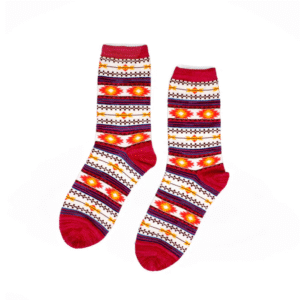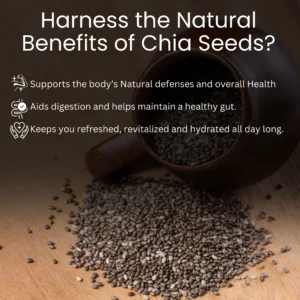Introduction
Quinoa (pronounced keen-wah) has emerged as a superstar in the world of nutrition and health. Often labeled as a “superfood,” this tiny seed packs an impressive array of nutrients and health benefits. Though commonly mistaken for a grain, quinoa is actually a pseudocereal, meaning it is not a true cereal like wheat or rice, but is used in similar ways in cooking. This nutrient-dense seed is native to the Andean region of South America, primarily Peru and Bolivia, where it has been cultivated for over 5,000 years.
As the global demand for healthier foods continues to rise, quinoa has become increasingly popular in places like Pakistan, the Middle East, Europe, and North America. In this comprehensive guide, we’ll explore what quinoa is, its nutritional profile, types, health benefits, culinary uses, and how it can be a part of your everyday diet.
Many low-quality personal care products contain parabens, sulfates, phthalates, and artificial fragrances that can harm your body in the long term
1. Origin and History of Quinoa
Quinoa was considered sacred by the Inca civilization, often referred to as the “mother of all grains.” The Incas believed it to be a gift from the gods, and it was a staple in their diet alongside maize and potatoes.
After the Spanish conquest, quinoa’s cultivation declined in favor of European crops. However, in the 20th and 21st centuries, quinoa made a powerful comeback due to its remarkable nutritional profile and gluten-free properties.
In recent years, quinoa farming has extended beyond South America to countries like the United States, India, China, and Pakistan, where awareness of healthy foods is increasing.
2. What Is Quinoa?
Quinoa is the seed of the Chenopodium quinoa plant, a broadleaf plant that grows 3 to 6 feet tall. Although it behaves like a grain in cooking, it is botanically related to beets, spinach, and chard.
The seeds are tiny—about the size of couscous or millet—and come in various colors. The outer layer of the seed contains a compound called saponin, which has a bitter taste and acts as a natural insect repellent. This coating is typically removed during processing.
3. Types of Quinoa
Quinoa comes in several varieties, the most common being:
- White Quinoa
The most widely available and has a mild, fluffy texture. Great for beginners and can be used in most recipes.
- Red Quinoa
A bit crunchier and nuttier in flavor. Excellent for cold salads as it holds its shape better after cooking.
- Black Quinoa
Has a slightly earthier flavor and is a bit firmer. It takes slightly longer to cook than white quinoa.
- Tri-color Quinoa
A mix of white, red, and black quinoa. Offers a balanced texture and a colorful appearance on the plate.
4. Nutritional Profile of Quinoa
Quinoa is one of the few plant-based foods considered a complete protein, meaning it contains all nine essential amino acids. This makes it especially valuable for vegetarians, vegans, and people seeking protein-rich alternatives to meat.
Here’s what makes quinoa a nutritional powerhouse:
Nutrient Per 1 Cup Cooked (185g)
Calories 222
Protein 8g
Carbohydrates 39g
Dietary Fiber 5g
Fat 3.5g
Iron 2.8mg (15% DV)
Magnesium 118mg (30% DV)
Manganese 1.2mg (58% DV)
Phosphorus 281mg (28% DV)
Folate 77.7mcg (19% DV)
Vitamin B1, B2, B6 Present
Antioxidants Rich in quercetin and kaempferol
Note;Choosing the best quinoa seed for yourself depends on your health goals, dietary needs, cooking preferences, and availability.
5. Health Benefits of Quinoa
- Rich in Protein
Quinoa offers all essential amino acids, making it ideal for muscle repair, growth, and energy. It’s especially helpful for vegetarians who lack access to animal proteins.
- High in Fiber
With more fiber than most grains, quinoa aids digestion, prevents constipation, and helps regulate blood sugar.
- Gluten-Free
People with celiac disease or gluten intolerance can enjoy quinoa without the digestive issues associated with wheat or barley.
- Heart-Healthy
It contains healthy fats and helps lower bad cholesterol (LDL) while improving good cholesterol (HDL).
- Regulates Blood Sugar
The fiber and protein combination helps reduce sugar spikes, making quinoa ideal for diabetics.
- Supports Weight Loss
Quinoa’s high fiber and protein content can help you feel full longer, reducing overall calorie intake.
- Loaded with Antioxidants
Quinoa is rich in quercetin and kaempferol, two powerful antioxidants that protect the body against inflammation, viruses, and aging.
6. Quinoa in Pakistani Diet
As health awareness rises in Pakistan, quinoa is gradually being incorporated into daily diets. Though still relatively new, it is gaining popularity in:
Fitness communities
Diabetic meal plans
Weight-loss diets
Children’s meals for improved nutrition
Due to increasing demand, locally grown quinoa is now available in provinces like Punjab and Sindh, making it more accessible and affordable.
7. How to Cook Quinoa
Cooking quinoa is easy and similar to rice. Here’s a basic method:
Ingredients:
1 cup quinoa
2 cups water or broth
Salt (optional)
Instructions:
Rinse quinoa thoroughly under cold water to remove bitterness.
In a saucepan, combine rinsed quinoa and water.
Bring to a boil, then reduce heat to low.
Cover and simmer for 15 minutes or until water is absorbed.
Let it sit covered for 5 minutes. Fluff with a fork.
Cooked quinoa can be used hot or cold and stored in the refrigerator for up to a week.
8. Culinary Uses of Quinoa
Quinoa is incredibly versatile. Here are some common uses:
Breakfast:
Quinoa porridge with fruits and honey
Quinoa pancakes or muffins
Lunch:
Quinoa salad with vegetables and lemon vinaigrette
Wraps with quinoa, hummus, and grilled veggies
Dinner:
Quinoa pulao or biryani
Stir-fried quinoa with chicken or tofu
Snacks:
Quinoa energy balls
Quinoa crisps or roasted quinoa puffs
It can also replace rice, couscous, or pasta in almost any dish.
Conclusion
Quinoa is far more than just a health trend—it’s a nutrient-dense, protein-rich seed that offers countless health benefits and culinary versatility. Its status as a complete protein, high fiber food, and gluten-free alternative makes it a valuable addition to modern diets across the globe, including in countries like Pakistan.
As awareness continues to grow, quinoa is likely to become a staple in many homes and health-conscious kitchens. Whether you’re managing your weight, balancing your blood sugar, or simply exploring new foods, quinoa is a worthy inclusion in your daily meals.








